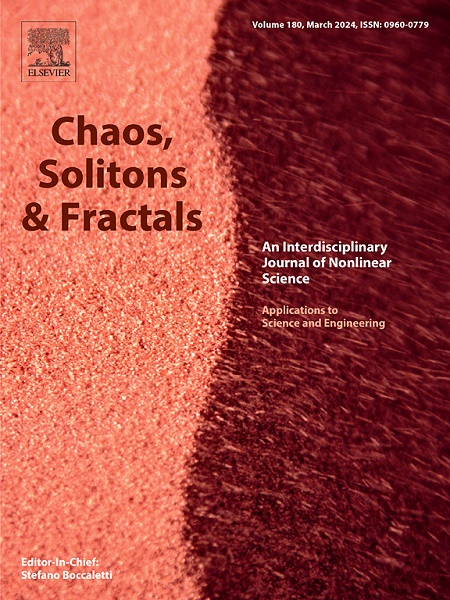城市轨道交通网络空间分布特征的分形分割模型
IF 5.6
1区 数学
Q1 MATHEMATICS, INTERDISCIPLINARY APPLICATIONS
引用次数: 0
摘要
针对单一分形维数的分形模型在表征城市轨道交通网络空间非均匀分布方面的局限性,通过总结网络长度曲线拐点的变化规律和空间分布分析中二元分类的定义,建立了分段分形模型。该模型坚持了不相交分形集测度的可数可加性定义,保留了分形理论固有的测度关系。通过对典型城市轨道交通网络数据的空间分布分析,探讨了模型参数与空间分布特征的相关性。这个过程验证了模型的有效性,同时也探索了模型参数的物理意义。结果表明,该模型中的分割点将网络划分为两个域。第一和第二域对应的分形维数相对独立,可以用来表征网络的空间异质性增长率。在该模型中,分割点被确定为与标准差距离、半长轴、半短轴等空间分布特征呈显著正相关的主要参数。相关系数分别为0.89、0.90、0.75。这些结果表明,位于第一域内的网络表现出聚集分布特征,而位于第二域内的网络表现出分散分布特征。此外,发现模型中的参数不能充分反映网络内定向分布的强度。然而,这些模型参数中的分割点可以作为定向分布网络沿其半长轴和半短轴覆盖范围的指标。本文章由计算机程序翻译,如有差异,请以英文原文为准。
A segmented fractal model associated with the spatial distribution characteristics of urban rail transit network
In view of the limitations of fractal models with single fractal dimension in representing the spatial non-uniform distribution of urban rail transit network, a segmented fractal model is established by summarizing the variation patterns of inflection points in network length curves and the definition of binary classification in spatial distribution analysis. This model adheres to the countable additivity definition of the measurement for disjoint fractal sets and retains the inherent measurement relationship in fractal theory. By examining the results of spatial distribution analysis derived from typical urban rail transit network data, the correlation between model parameters and spatial distribution characteristics is investigated. This process validates the effectiveness of the model while also exploring the physical meaning of its parameters. The results show that the segmented point in this model divides the network into two domains. The fractal dimensions corresponding to the first and second domains are relatively independent and can be utilized to characterize the spatial heterogeneous growth rate of the network. Segmented point in this model is identified as the main parameter that exhibits significant positive correlations with the spatial distribution characteristics, including the standard deviation distance, semi-major axis and semi-minor axis. The correlation coefficients are 0.89, 0.90, and 0.75, respectively. These results indicate that the network located within the first domain demonstrates an aggregation distribution characteristic, whereas that within the second domain exhibits a dispersion distribution characteristic. Besides, the parameters in the model have been found to inadequately reflect the intensity of directional distribution within the network. However, the segmented point within these model parameters can serve as an indicator for the coverage range of a directionally distributed network along both its semi-major and semi-minor axes.
求助全文
通过发布文献求助,成功后即可免费获取论文全文。
去求助
来源期刊

Chaos Solitons & Fractals
物理-数学跨学科应用
CiteScore
13.20
自引率
10.30%
发文量
1087
审稿时长
9 months
期刊介绍:
Chaos, Solitons & Fractals strives to establish itself as a premier journal in the interdisciplinary realm of Nonlinear Science, Non-equilibrium, and Complex Phenomena. It welcomes submissions covering a broad spectrum of topics within this field, including dynamics, non-equilibrium processes in physics, chemistry, and geophysics, complex matter and networks, mathematical models, computational biology, applications to quantum and mesoscopic phenomena, fluctuations and random processes, self-organization, and social phenomena.
 求助内容:
求助内容: 应助结果提醒方式:
应助结果提醒方式:


